Idaho Power has once again started its Integrated Resource Plan (IRP) process. It does this process every two years, which creates a master plan for the utility that outlines how it will meet the region’s energy needs for the next 20 years by choosing a portfolio of energy resources that are the “least cost and least risk” through its modeling.
As climate and clean energy advocates, this process is a big deal to us. It’s an opportunity to steer the utility toward phasing out dirty fossil fuel energy and investing in local, clean, renewable energy and energy efficiency. Climate science and justice demand that we “decarbonize” our electric grid by the end of this decade, and Idaho Power simply isn’t on that track.
Idaho Sierra Club actually has a seat on Idaho Power’s IRP Advisory Council, alongside our clean energy partners at Snake River Alliance and Idaho Conservation League, and about twenty other stakeholders who range from industry, research, and government representatives. This Advisory Council meets monthly during the IRP process to review Idaho Power’s analyses and plans and offer feedback, and the meetings are open to the public.
The first IRP Advisory Council meeting for this year’s process was on Feb 9, 2021. You can see the agenda and materials for that meeting--and all the IRP meetings--on Idaho Power’s IRP website. There were several items of interest for us as clean energy advocates, particularly the discussions on Idaho Power’s clean energy goal, its carbon outlook, and its Valmy Coal Plant study.
Clean Energy Goal
In 2019 Idaho Power announced a corporate goal to provide 100% Clean Energy by 2045. During its IRP Advisory Council presentation on Feb 9, they touted their commitment to this goal, including plans for exiting coal plants and building new renewable energy. However, we noted several inconsistencies in what they talk about and what’s actually happening.
For example, while we applaud their efforts to exit all their coal plants by 2030, they’re still planning to burn methane gas and build new polluting methane gas plants. They plan to meet the power lost from the coal plants by building a massive transmission line in 2026, and don’t plan to develop any significant quantities of renewable energy and battery storage until after 2030 (see the table from the 2019 IRP below). Additionally, their carbon emissions actually increase during the 2020s and don’t come close to meeting a “Clean by 2045” target in the long run (see graph made by Mike Heckler from the 2019 IRP data below). Lastly, they weren’t able to answer the question of how this year’s modeling process, which typically aims primarily to reduce costs, will account for their “Clean by 2045” goal.
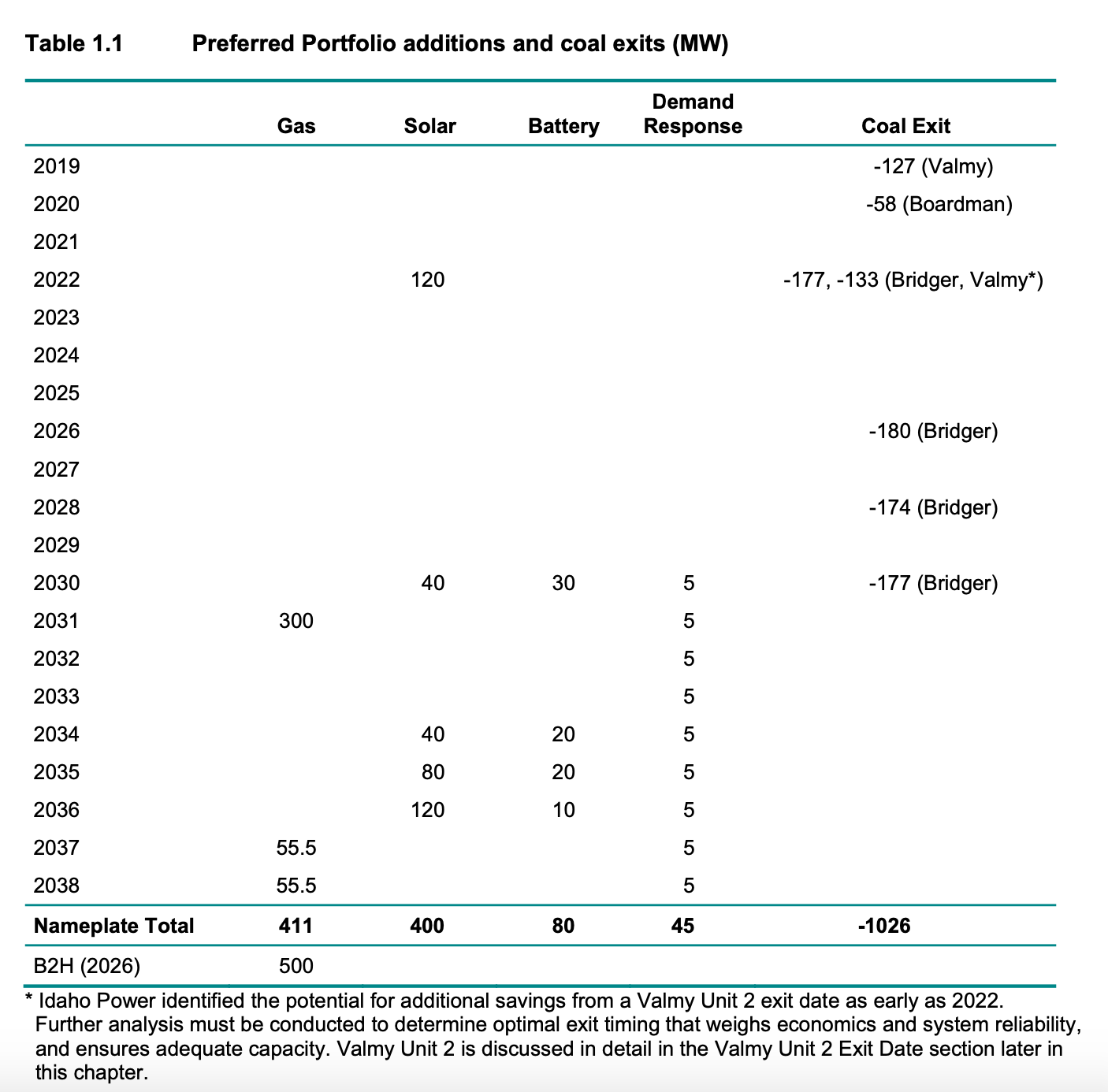
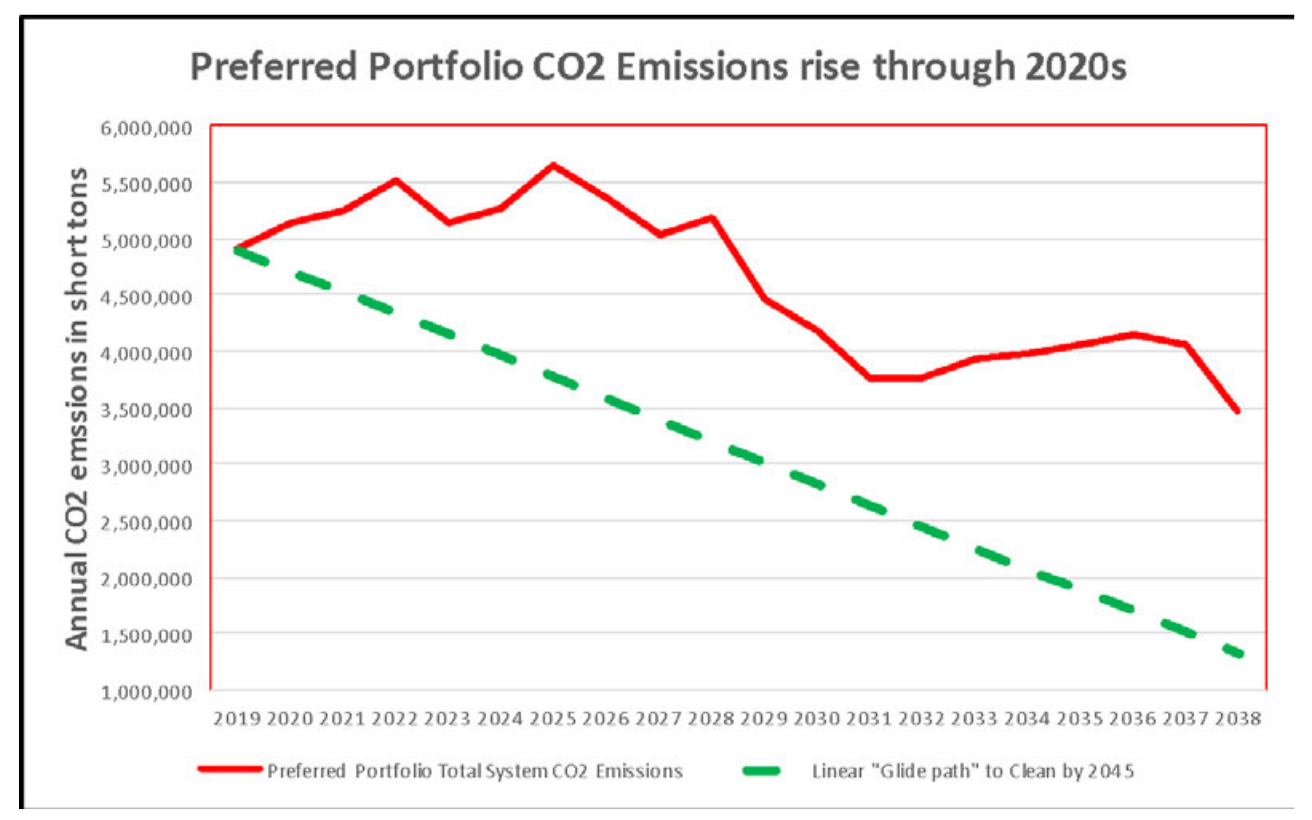
Carbon Outlook
As part of their resource analysis, Idaho Power has to consider additional costs around their fossil fuel resources such as coal and methane gas that emit the climate change pollutant carbon dioxide (CO2). Their presentation on Feb 9 outlined state, regional, and federal climate policies that could increase the cost of fossil fuel resources through things such as carbon prices that make polluters pay for the social and environmental costs of carbon emissions. Below you can see one of their slides, which shows some of the proposals currently being considered in Congress that would put different prices on carbon emissions. Though the future of these policy proposals is unknown, Idaho Power considers these and other factors when determining the future “cost” of its fossil fuel resources.
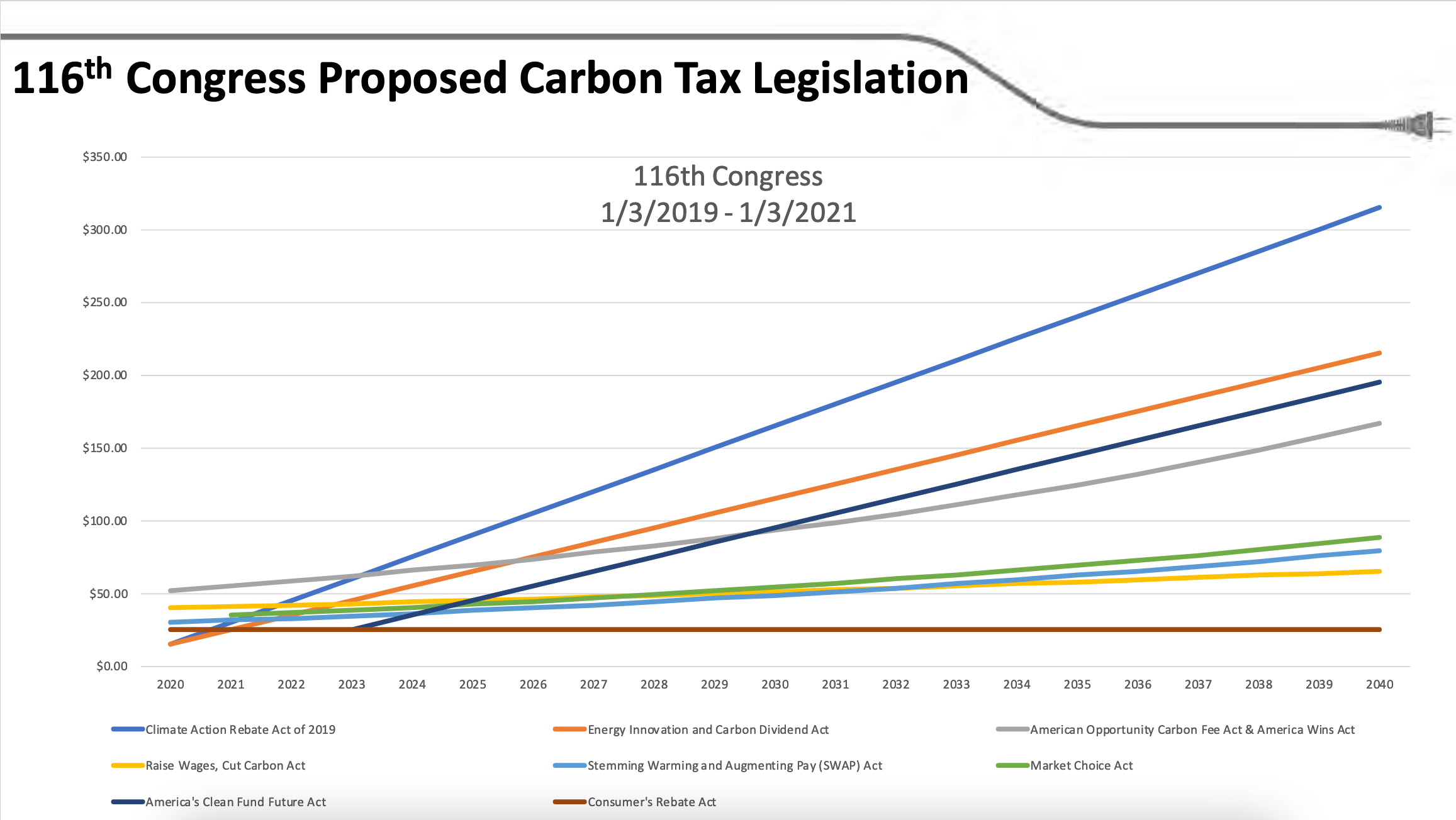
Valmy Coal Plant Study
Idaho Power concluded in its last IRP that it could save $3 million by exiting Unit 2 of its Valmy Coal Plant in Nevada by 2022 instead of 2025 (it already exited Unit 1 in 2019). We’ve long known that coal is not an economical energy resource, and it’s great to see utilities finally recognizing that and taking actions to get out of the coal business as soon as possible. (see info on the Valmy Coal plant from Idaho Power's slides on Feb 9 below)
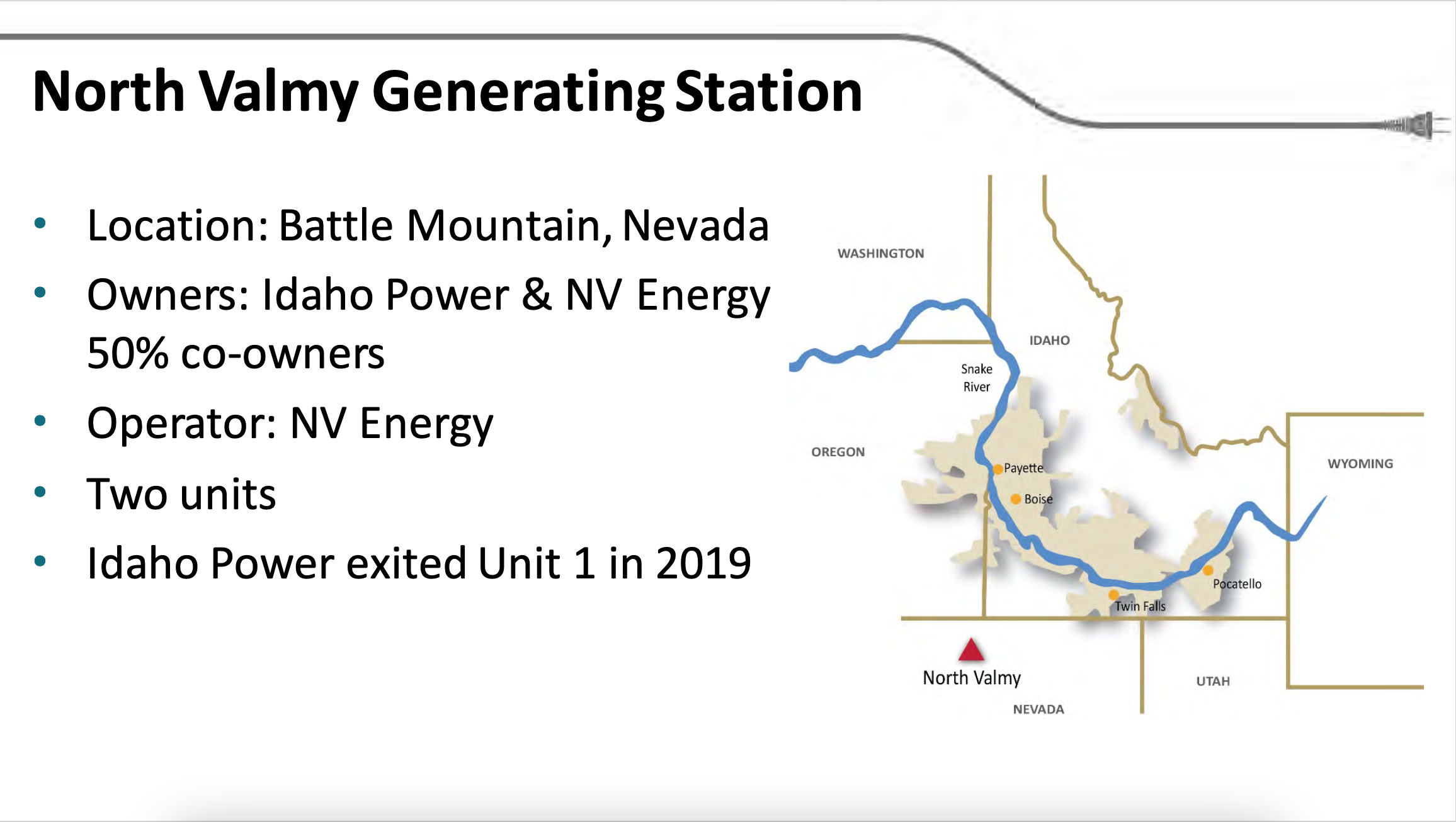
Idaho Power is conducting a study this year to determine whether it’s actually feasible to exit Valmy earlier than planned, and will make that determination in the coming months. During their presentation on Feb 9, we heard what the study would look like, and had a few concerns. Rather than considering replacing the power from Valmy with new, local renewable energy resources, Idaho Power is simply looking at whether it could buy (potentially dirty) replacement power on the market through its transmission lines. We think there’s a huge missed opportunity here, and are urging Idaho Power to analyze other clean energy replacement options.
What You Can Do
As an Idaho Power customer, you have every right to participate in this process and make your voice heard. This is your utility, and your energy future. And Idaho Power needs to know that customers are watching closely and expect results that actually align with its stated clean energy goal.
Tell Idaho Power where you want your energy to come from over the next 20 years using their IRP Comment Form. Share some of your thoughts after reading the above. Also, feel free to pose questions, and Idaho Power’s team should get back to you with answers.
You can also engage with our team here at Idaho Sierra Club around these issues. Please reach out to our Director Lisa Young at lisa.young@sierraclub.org to ask questions or learn more about how to get involved.
Lastly, share this information with your friends, family, and neighbors. Knowledge is power, and the more informed customers are about their electric utility, the more we’re able to collectively advocate for the clean energy future we know we need. Share this blog and some of these graphs on your social media and spread the word about how Idaho Power can improve its clean energy planning.
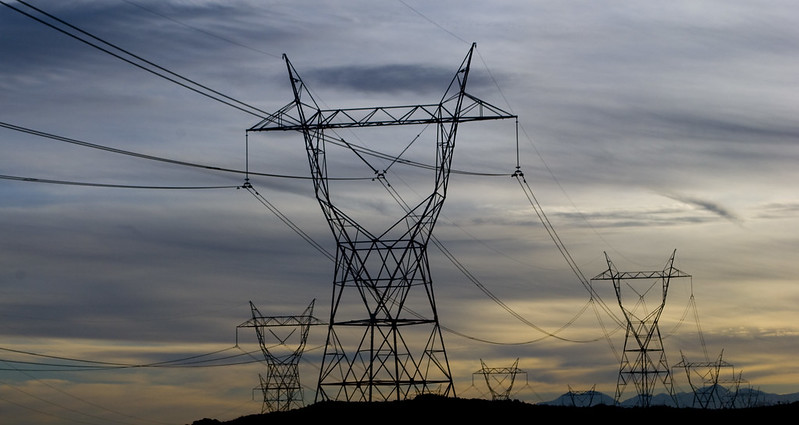
Photo Credit: Srinivasagopalan Narasimhan